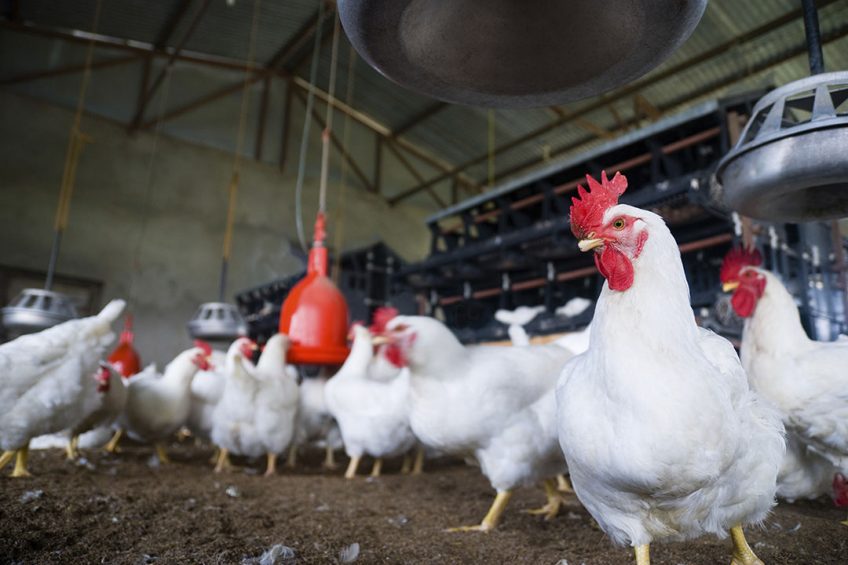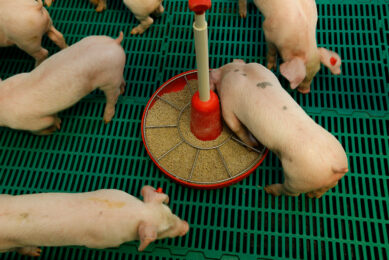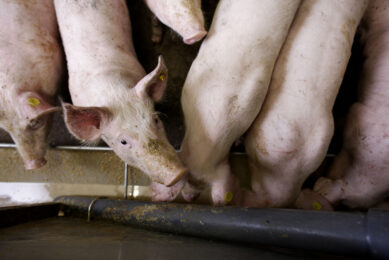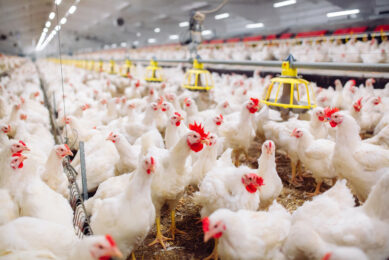Science matters in gut health solutions

Solid, scientifically well-founded solutions to support gut health are key to maximising poultry production performance. A eubiotic solution with a triple mode of action establishes a more balanced intestinal microbiota, improves litter quality and consequently better growth and feed efficiency, studies have shown.
Over the years a variety of feed additives and strategies have been developed to achieve sustainable and efficient broiler production focusing on improvements in gut health. Gut health is discussed extensively, but due to the complex nature of the topic, a clear or simple definition is missing. A healthy gut promotes proper absorption and utilisation of nutrients, helps prevent proliferation of intestinal pathogens, and supports an optimal functioning immune system. Any gut disturbances or intestinal microbial flora imbalance can lead to depressed growth and feed efficiency, impairing the welfare of the bird and final profitability of production.
For many poultry producers it is not easy to decide which gut health solution delivers the most efficient and beneficial results for them as there is a huge variety of additives present in the market all claiming to accomplish this goal. However, truly reliable and efficacious products should be marked by clear, scientific concepts and evidence about mode of action and resulting beneficial impact on the animal’s health and performance. In addition, independent in vivo research demonstrating its efficiency in commercial poultry operations is essential to making a reliable, informed decision. Avimatrix, a blend of protected aromatic compounds, or BPAC, from Novus International, is a eubiotic poultry solution that fulfils such rigorous requirements. Its unique formulation supports a well-balanced microbiota in the intestine which, in scientific and commercial conditions, has shown to improve litter quality, support foot pad health, and increase body weight and reduce feed conversion ratio. It is approved in the European Commission as a zootechnical feed additive preparation improving the performance of chickens for fattening and chickens reared for laying.
Optimal feed efficiency
The foundation for efficacy of BPAC is its manufacturing technology. This technology ensures a slow, gradual release of benzoic acid, a key active ingredient, throughout the entire intestine. In a study, ‘Effects of free- and encapsulated benzoic acid supplementation on performance, gut bacterial metabolites and gut bacterial composition in broiler chickens’, conducted in collaboration with the University of Berlin, four different strains of lactic acid bacteria, chosen for their correlation with a healthy gut, were analysed in the jejunum, ileum and caeca. The four strains were: Lactobacillus reuteri and L. johnsonii, known to inhibit growth of pathogens by competitive exclusion; L. amylovorus, which stimulates and supports villi development and L. acidophilus, which can inhibit the growth of certain pathogenic bacteria. In each of the different segments, birds supplemented with BPAC had a significantly higher presence of lactic acid species assessed (Figure 1).
Figure 1 – Promoting a probiotic flora in different segments of the intestinal tract.

Such an enhancing effect on the growth of the ‘good’ intestinal flora contributes to obtaining and maintaining a well-balanced microbiota and protection of the intestinal cells. Additionally, higher lactic acid production and presence of Lactobacilli spp. is beneficial in stimulating metabolic cross-feeding. Producers of intestinal butyrate belonging to the Clostrida clusters IV and XIVa use lactic acid as a substrate for growth. Attention has shifted towards finding methods to drive the endogenous production of butyric acid due to its different described positive effects on gut integrity and intestinal health. BPAC can significantly increase the number of butyric acid producing bacteria in the jejunum, indicating additional potential to positively influence intestinal integrity through this specific metabolic cross-feeding pathway (Figure 2).
Figure 2 – Increase of Clostridium IV and XIVa species in the intestinal tract of broiler chickens fed BPAC vs non-supplemented birds.

Preventing intestinal disorders
The establishment of a prophylactic environment in the intestines helps also to prevent intestinal disorders caused by overgrowth of pathogenic bacteria such as E.coli, Clostridium perfringens, Salmonella spp. and Campylobacter. Several other studies conducted with BPAC, performed in both scientific and commercial field conditions, have shown a significant effect of reducing the numbers of E. coli and C. perfringens present in the gut. One study also assessed if subsequently the visual aspect of the mucosa, as an indicator of the general health condition of the intestines was improved. Results showed a favourable influence on both bacterial load as incidence and severity of lesions in the ileum, duodenum and caecum.
A healthier digestive tract with the inclusion of BPAC in a poultry diet, will eventually support optimal feed conversion and growth of the animal. It will also benefit the litter quality as poor gut health typically is associated with higher moisture and ammonia content of the faeces.
A large scale study with a Dutch commercial broiler producer found the litter of birds supplemented with BPAC to be significantly drier and lower in ammonia nitrogen content in comparison to the litters of non-supplemented birds. As the only difference between the groups evaluated in the Dutch study was the addition of 500g/t BPAC, the results represent an indirect measurement of intestinal health. This reflected also in less severe foot pad dermatitis lesions for the BPAC supplemented birds which overall led to improved final production performance results seen through better growth and feed conversion.
References available on request
Author: Dr Sven Keller, Sr. Technical Service Manager Central EU, Novus Deutschland











